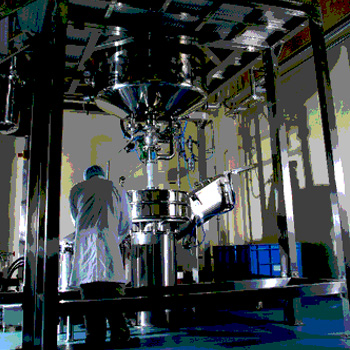The year is 1906. Two men with government IDs conduct a “surprise” inspection of a Chicago meatpacking plant. The secret of their visit has been leaked—employees have worked three shifts a day for 3 weeks to clean the factory, but the conditions inside are still far from sanitary. Rat droppings litter the food, pests ride the production lines and rancid meat is packed for shipping. At the end of the visit, the inspectors file a report that changes the history of food safety, culminating in the law that establishes the U.S. Food and Drug Administration (FDA).
Fast forward to 2009. Another government inspection is taking place, this time in a peanut butter plant in southwest Georgia. The inspectors find rats scurrying throughout the facility and a leaky roof fostering germs. A Salmonella outbreak that claims eight lives and affects 19,000 people is traced back to the plant, forcing a shutdown. Again, the event makes history. It spurs the largest food recall the United States has ever seen and joins a litany of food safety scares that prompts Congress to pass the Food Safety Modernization Act (FSMA) in 2011.
On January 6 of this year, FDA unveiled a new FSMA rule designed to make food processing even safer. The proposed rule focuses on preventive controls for human food and will require facilities to be inspected according to how they prevent food safety problems rather than solely how they respond to them.
FDA estimates the rule will prevent 1 million foodborne illnesses each year, saving $2 billion annually. The rule is open for public comment until May 16, after which time FDA will publish a final rule that will affect an estimated 97,600 domestic and 109,200 foreign facilities that manufacture, process, pack or hold human food.
Playing by the New Rule
The proposed FSMA rule will require facilities to prepare and implement a written food safety plan that identifies hazards to food safety; specifies the steps and processes that will be executed to minimize or prevent those hazards; identify and implement monitoring procedures; keep thorough records of the food safety program; and specify actions that will be taken to correct problems that arise.
If the requirements sound familiar, it’s because they’re similar to the Hazard Analysis and Critical Control Points (HACCP) system pioneered by the food industry and required by FDA for juice and seafood plants. Plus, many facilities that are currently audited by major third-party auditors and Global Food Safety Initiative-compliant standards will already meet the rule’s stipulations.
Smaller, more regional food processing plants that have not yet implemented formal food safety programs will likely be most impacted by the rule. The key change for the industry is that practices that were once voluntary, or recommended, will now become regulatory, or mandated by law. FDA will be empowered to inspect facilities according to the rule and issue fines or other penalties if facilities don’t comply.
Acing FSMA with IPM
Plants that do not meet the proposed rule’s requirements will likely need to add more rigorous controls to their sanitation, maintenance and pest management programs, as all of these fall within the bounds of the new rule and are critical components of a comprehensive food safety plan. (See sidebar "How IPM Programs Align With the FSMA Rule")
In particular, integrated pest management (IPM) programs will become more important than ever. IPM combines sanitation, maintenance and pest management practices to prevent contamination from pests. First applied in the agricultural industry, it has since been used in food processing facilities to manage pests and reduce the risk of pest contaminants for decades. Facilities that currently lack an IPM program will want to move quickly to put one in place in order to comply with FSMA. See the sidebar for details on how IPM fulfills the new FSMA rule’s requirements.
Avoiding the Pitfalls
There’s little doubt the proposed FSMA rule will put the food processing industry under an even brighter microscope. To get food safety and pest management right in the FSMA era, facilities need to work diligently to make sure that every part of their IPM program makes it from paper to practice.
Commonly missed elements of IPM programs include the following:
• Corrective actions. Many facilities fail to document the corrective actions they take to resolve problems, or worse, do not have a plan in place to implement corrective actions and prevent them from occurring again.
• Documentation. More often than not, some part of the required documentation is missing. A facility may keep a pesticide usage log, for instance, but omit information about where the pesticide was applied and who applied it. Plants must keep records of their pest management professional’s credentials (including license, training and certification); corrective action reports; threshold limits; Material Safety Data Sheets/labels; a floor plan showing interior and exterior devices (traps, bait stations, glueboards and insect light traps); pest sighting logs; pest trend logs and analyses; service reports (including the name of the individual conducting the service, services performed and date); and pesticide usage logs specifying products, dates, times, target pests and EPA numbers.
• Continuously improving the program. It’s not enough to simply document and collect data—facilities must show they’re using the data to improve their IPM program. For example, if a plant is not catching any cockroaches in the bait stations on the west side of the building month after month, it should decrease the amount of treatment on the west side. Inspectors will want to see that you’re using the data you capture to improve efforts to keep food safe and ensure your programs remain effective.
• Sanitation and structural issues. Sanitation and facility maintenance are a key part of any hazard analysis and risk-based preventive control program. Many pest threats can be minimized or prevented entirely by: 1) reducing the sources of food, water and shelter that attract pests with strict sanitation procedures and 2) sealing cracks, installing door sweeps and screening windows as part of your facility maintenance efforts to keep pests out.
Looking Ahead
The new rule may not go into effect for several months, but it’s important to start working with your provider now to ensure your pest management efforts align with the food safety plan FSMA will require. Regulatory standards will likely become tougher over time, but a well-conceived and well-implemented IPM program will keep your plant out of the headlines and out of the food safety history books.
Dr. Zia Siddiqi is director of quality systems for Orkin. A board-certified entomologist with more than 30 years in the industry, Dr. Siddiqi is an acknowledged leader in the field of pest management. For more information, e-mail zsiddiqi@orkin.com or visit www.orkincommercial.com.
Sidebar
How IPM Programs Align With the FSMA Rule
.jpg) IPM lines up perfectly with the requirements of the proposed FSMA rule and can be implemented in partnership with your pest management professional.
IPM lines up perfectly with the requirements of the proposed FSMA rule and can be implemented in partnership with your pest management professional.




